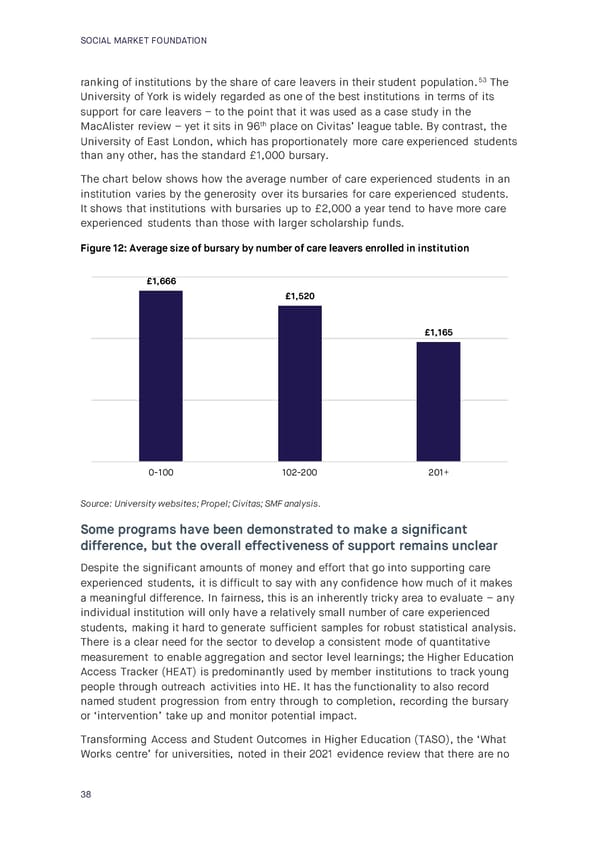SOCIAL MARKET FOUNDATION 53 ranking of institutions by the share of care leavers in their student population. The University of York is widely regarded as one of the best institutions in terms of its support for care leavers – to the point that it was used as a case study in the MacAlister review – yet it sits in 96th place on Civitas’ league table. By contrast, the University of East London, which has proportionately more care experienced students than any other, has the standard £1,000 bursary. The chart below shows how the average number of care experienced students in an institution varies by the generosity over its bursaries for care experienced students. It shows that institutions with bursaries up to £2,000 a year tend to have more care experienced students than those with larger scholarship funds. Figure 12: Average size of bursary by number of care leavers enrolled in institution £1,666 £1,520 £1,165 0-100 102-200 201+ Source: University websites; Propel; Civitas; SMF analysis. Some programs have been demonstrated to make a significant difference, but the overall effectiveness of support remains unclear Despite the significant amounts of money and effort that go into supporting care experienced students, it is difficult to say with any confidence how much of it makes a meaningful difference. In fairness, this is an inherently tricky area to evaluate – any individual institution will only have a relatively small number of care experienced students, making it hard to generate sufficient samples for robust statistical analysis. There is a clear need for the sector to develop a consistent mode of quantitative measurement to enable aggregation and sector level learnings; the Higher Education Access Tracker (HEAT) is predominantly used by member institutions to track young people through outreach activities into HE. It has the functionality to also record named student progression from entry through to completion, recording the bursary or ‘intervention’ take up and monitor potential impact. Transforming Access and Student Outcomes in Higher Education (TASO), the ‘What Works centre’ for universities, noted in their 2021 evidence review that there are no 38
 Care and Learning in Higher Education Page 38 Page 40
Care and Learning in Higher Education Page 38 Page 40